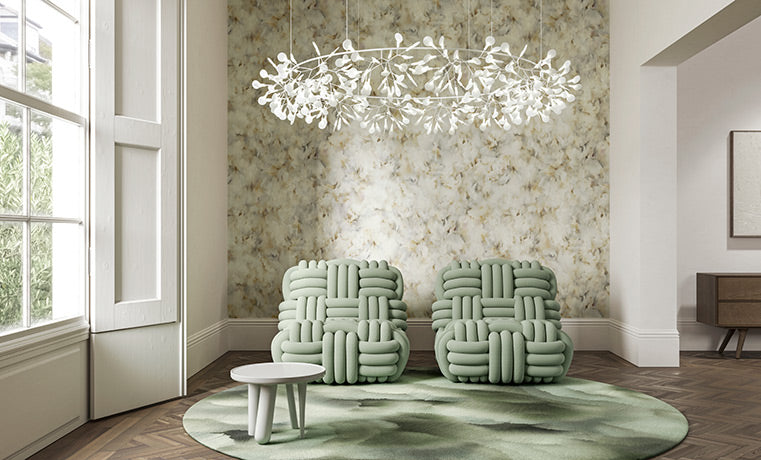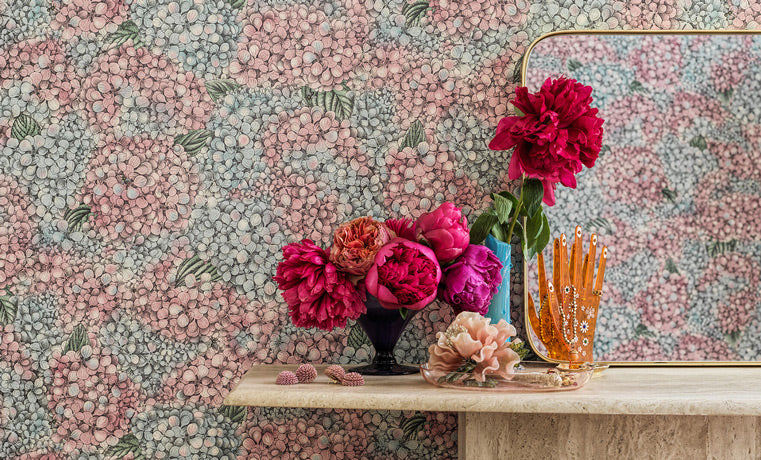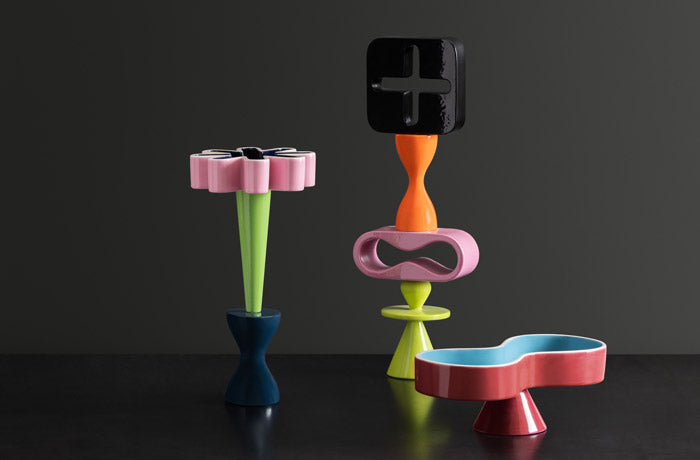
Studio Job x Landrover 2013 The Netherlands were primarily known for graphic design until the 1980s, when the term Dutch Design started to come into popular use. The term came to be closely identified with a group of Dutch product designers who have gained international recognition particularly from the 1990s onwards. These include Maarten Baas, Jurgen Bey, Hester and Marcel Wanders, as well as internationally recognised design firms and collectives like Droog and Moooi which helped gain prominence for Dutch designers at major design events such as the Salone del Mobile in Milan. A second contributing factor to the success of Dutch design is government support for new designers. Financial support from the Fonds BKVB (the Fund for Visual Arts, Design and Architecture), launched in 1988, has enabled design students to set themselves up as independent entrepreneurs right after graduation. Dutch design is characterised by simplicity and clarity. It is often described as being down to earth, humorous, surprising and smart. These characteristics are the result of creativity in an open, tolerant society. The 90’s in large were very much inspired by the scandinavian approach, white, clean and minimal, with the idea that you may one day be able to sell your home at ease following these simple interior rules. The latter part of the naughties, hit by recession has been about up cycling; reclaiming one mans junk as anothers make do and mend. Craft became cool with Etsys launch in 2005, and shabby chic became popular with the masses, giving rise to a whole new style of eclecticism.

L'afrique Carpet by Moooi Dutch Design The new wave of dutch designers and manufacturers including Studio Job, NLXL, LEFF Amsterdam and Piet Hein Eek have among themselves created an eclectic mix of products and designs that are extremely inter-changeable within room sets and the products themselves. For example, Studio Job’s ‘off the wall’
L’afrique wallpaper design has recently been adapted to create a stunning circular rug by Marcel Wanders’ design house Moooi. Although there is much forward thinking from the current Dutch elite, as with all contemporary design there is also a lot of looking back. Leff Amsterdam have taken the almost forgotten classic flip clock and turned it into a thing of beauty, quite simply by changing the materials used to produce it, from plastic to copper.
 Brick Clock by Leff Amsterdam
Brick Clock by Leff Amsterdam  Brooklyn Tins Wallpaper by Merci & NLXL
Brooklyn Tins Wallpaper by Merci & NLXL Wallpaper manufacturer NLXL, teamed up with Parisian superstore Merci to produce the incredible Brooklyn Tins wallpaper collection. Inspired by tin plates typically found in factories and warehouses in North America at the turn of the century, Brooklyn Tins has caused a storm amongst restauranteurs, interior designers and home owners due to its adaptability within room schemes. Welcome to a new era of Interior Design, where its not just the idea that counts, but the quality of the product and how it can be used in multiple ways. Article originally featured in September's edition of The Norwich Resident. www.janerichards.co.uk
 Studio Job x Landrover 2013 The Netherlands were primarily known for graphic design until the 1980s, when the term Dutch Design started to come into popular use. The term came to be closely identified with a group of Dutch product designers who have gained international recognition particularly from the 1990s onwards. These include Maarten Baas, Jurgen Bey, Hester and Marcel Wanders, as well as internationally recognised design firms and collectives like Droog and Moooi which helped gain prominence for Dutch designers at major design events such as the Salone del Mobile in Milan. A second contributing factor to the success of Dutch design is government support for new designers. Financial support from the Fonds BKVB (the Fund for Visual Arts, Design and Architecture), launched in 1988, has enabled design students to set themselves up as independent entrepreneurs right after graduation. Dutch design is characterised by simplicity and clarity. It is often described as being down to earth, humorous, surprising and smart. These characteristics are the result of creativity in an open, tolerant society. The 90’s in large were very much inspired by the scandinavian approach, white, clean and minimal, with the idea that you may one day be able to sell your home at ease following these simple interior rules. The latter part of the naughties, hit by recession has been about up cycling; reclaiming one mans junk as anothers make do and mend. Craft became cool with Etsys launch in 2005, and shabby chic became popular with the masses, giving rise to a whole new style of eclecticism.
Studio Job x Landrover 2013 The Netherlands were primarily known for graphic design until the 1980s, when the term Dutch Design started to come into popular use. The term came to be closely identified with a group of Dutch product designers who have gained international recognition particularly from the 1990s onwards. These include Maarten Baas, Jurgen Bey, Hester and Marcel Wanders, as well as internationally recognised design firms and collectives like Droog and Moooi which helped gain prominence for Dutch designers at major design events such as the Salone del Mobile in Milan. A second contributing factor to the success of Dutch design is government support for new designers. Financial support from the Fonds BKVB (the Fund for Visual Arts, Design and Architecture), launched in 1988, has enabled design students to set themselves up as independent entrepreneurs right after graduation. Dutch design is characterised by simplicity and clarity. It is often described as being down to earth, humorous, surprising and smart. These characteristics are the result of creativity in an open, tolerant society. The 90’s in large were very much inspired by the scandinavian approach, white, clean and minimal, with the idea that you may one day be able to sell your home at ease following these simple interior rules. The latter part of the naughties, hit by recession has been about up cycling; reclaiming one mans junk as anothers make do and mend. Craft became cool with Etsys launch in 2005, and shabby chic became popular with the masses, giving rise to a whole new style of eclecticism.  L'afrique Carpet by Moooi Dutch Design The new wave of dutch designers and manufacturers including Studio Job, NLXL, LEFF Amsterdam and Piet Hein Eek have among themselves created an eclectic mix of products and designs that are extremely inter-changeable within room sets and the products themselves. For example, Studio Job’s ‘off the wall’ L’afrique wallpaper design has recently been adapted to create a stunning circular rug by Marcel Wanders’ design house Moooi. Although there is much forward thinking from the current Dutch elite, as with all contemporary design there is also a lot of looking back. Leff Amsterdam have taken the almost forgotten classic flip clock and turned it into a thing of beauty, quite simply by changing the materials used to produce it, from plastic to copper.
L'afrique Carpet by Moooi Dutch Design The new wave of dutch designers and manufacturers including Studio Job, NLXL, LEFF Amsterdam and Piet Hein Eek have among themselves created an eclectic mix of products and designs that are extremely inter-changeable within room sets and the products themselves. For example, Studio Job’s ‘off the wall’ L’afrique wallpaper design has recently been adapted to create a stunning circular rug by Marcel Wanders’ design house Moooi. Although there is much forward thinking from the current Dutch elite, as with all contemporary design there is also a lot of looking back. Leff Amsterdam have taken the almost forgotten classic flip clock and turned it into a thing of beauty, quite simply by changing the materials used to produce it, from plastic to copper.  Brick Clock by Leff Amsterdam
Brick Clock by Leff Amsterdam  Brooklyn Tins Wallpaper by Merci & NLXL Wallpaper manufacturer NLXL, teamed up with Parisian superstore Merci to produce the incredible Brooklyn Tins wallpaper collection. Inspired by tin plates typically found in factories and warehouses in North America at the turn of the century, Brooklyn Tins has caused a storm amongst restauranteurs, interior designers and home owners due to its adaptability within room schemes. Welcome to a new era of Interior Design, where its not just the idea that counts, but the quality of the product and how it can be used in multiple ways. Article originally featured in September's edition of The Norwich Resident. www.janerichards.co.uk
Brooklyn Tins Wallpaper by Merci & NLXL Wallpaper manufacturer NLXL, teamed up with Parisian superstore Merci to produce the incredible Brooklyn Tins wallpaper collection. Inspired by tin plates typically found in factories and warehouses in North America at the turn of the century, Brooklyn Tins has caused a storm amongst restauranteurs, interior designers and home owners due to its adaptability within room schemes. Welcome to a new era of Interior Design, where its not just the idea that counts, but the quality of the product and how it can be used in multiple ways. Article originally featured in September's edition of The Norwich Resident. www.janerichards.co.uk





